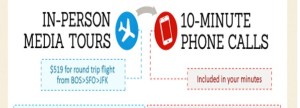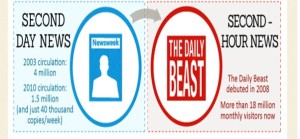In the last few weeks we have seen three public examples of “open mouth, insert foot” that have provided different levels of shame, misguidedness and opportunities to right real and perceived wrongs.
The first example, and most widely seen and reported was perpetrated by Duck Dynasty patriarch, Phil Robertson. In an interview with GQ Magazine (anyone else see some strains of irony here), Robertson got himself in some hot water. According to Fox News – “Robertson was suspended indefinitely by A&E after saying that ‘everything is blurred on what’s right and what’s wrong… Sin becomes fine … Start with homosexual behavior and just morph out from there. Bestiality, sleeping around with this woman and that woman and that woman and those men.’
Cracker Barrel initially took a stance by pulling Duck Dynasty merchandise of off the shelves, only to place the merchandise back on the shelves when perceived public perception (read dollar signs) seemed to fall on the side of the Duck Dynasty clan.
For his part, Robertson stands by his comments which he says are taken from scripture and individuals and companies like Sarah Palin, FOX News and others back him, citing free speech.
Every day is something new. Reports are saying he’s back on the show and according to the Chicago Tribune, in a recent announcement, Jesse Jackson Sr. compared Robertson’s recent comments about African-Americans, gay people and women to comments made by the driver of Rosa Parks’ bus.
Our second recent gaffe occurred when, according to CNN, Justine Sacco, a former PR executive sparked a firestorm of controversy on Twitter for the following tweet:
Sacco’s employer – media company IAC – fired Sacco after her tweet went viral. IAC issued the following statement: “The offensive comment does not reflect the views and values of IAC. We take this issue very seriously, and we have parted ways with the employee in question.”
In a written statement. Sacco apologized “for being insensitive to this crisis — which does not discriminate by race, gender or sexual orientation, but which terrifies us all uniformly — and to the millions of people living with the virus, I am ashamed.”
She added that she is a native of South Africa and was upset that she had hurt so many people there.
The last recent example, also occurred on Twitter, this time with comedic legend, Steve Martin. Per ABC News, the actor asked his Twitter followers to “submit your grammar here,” and when one user asked, “Is this how you spell lasonia?” Martin responded, “It depends. Are you in an African-American neighborhood or at an Italian restaurant?”
After receiving some negative feedback, Martin took responsibility, apologized on Twitter for the “offensive thing I’ve done” and posted on his website “I am very upset that a tweet I sent out last week has been interpreted by some to be insulting to African Americans … To those who were offended, again, I offer a deep, sincere, and humble apology without reservation.”
But Martin further explained that his “grammar” session with fans is something he’s done on other occasions, like “For example, a person might write ‘What’s the difference between ‘then’ and ‘than?’ I would say, ‘then’ is a conjunctive preposition, and ‘than’ is a misspelling of ‘thank.’”
Martin continued, “I was going along fine when someone wrote, “How do you spell ‘lasonia?’ I wrote: ‘It depends if you are in an African American neighborhood or an Italian restaurant.’ I knew of the name Lasonia. I did not make it up, nor do I find it funny. So to me the answer was either Lasonia (with a capital), or Lasagna, depending on what you meant.”
“That they sounded alike in this rare and particular context struck me as funny. That was the joke. When the tweet went out, I saw some negative comments and immediately deleted the tweet and apologized. I gathered the perception was that I was making fun of African American names. Later, thinking it over, I realized the tweet was irresponsible, and made a fuller apology on Twitter,” he added.
Martin added that he was cited incorrectly by some media outlets, who have yet to correct their misquoting of his tweet. But in the end, he again took responsibility for the blunder.
Phil Robertson, Justine Sacco and Steve Martin. Three widely different public figures who faced fast public scrutiny and outcry for things they said/did. My thoughts:
- Phil Robertson does have the “right” to believe what he believes. We all do. What is unfortunate is we are at a point where thoughts – right or wrong; left or right – are amplified and exasperated. Individuals and groups seem more concerned with furthering agendas instead of getting to the heart of the matter.
- Should we be taking everything written in scripture verbatim? Would it be helpful/healing to open real conversations where we can better understand why…who…when?
- Like it or not, we are all public figures. As a PR-person, Justine Sacco has to know better. Heck, she is a native of South Africa. Twelve words that will change her life. What she said was stupid, wrong, hurtful, naïve, etc. That said, I haven’t seen or heard the outcries of “free speech” that I’ve seen from Sarah Palin and others. Maybe, Sacco isn’t public enough…
- From a PR and social perspective, Steve Martin handled things great. He apologized. Took all the blame and explained the “backstory” of what he did. Unfortunately, but not surprisingly, “news outlets” distorted his tweet to make a better (and less accurate) story.
Bottom line, this isn’t the last we will see of situations like these. As long as we continue to care about “public figures” and the definition of “public figure” continues to expand; and as long as groups and individuals wanting to push forward agendas and personas are opportunistic; and as long as businesses have a stake in things; and as long as we all like being social and consider it social to hit someone when they are down; well, you get the idea.










![polls_top_10_3503_614378_poll_xlarge[1]](https://andyeshane.files.wordpress.com/2013/07/polls_top_10_3503_614378_poll_xlarge1.jpg?w=300&h=300)
![minussymbol[1]](https://andyeshane.files.wordpress.com/2013/07/minussymbol1.jpg?w=300&h=300)
![5[1]](https://andyeshane.files.wordpress.com/2013/07/51.jpg?w=300&h=240)

